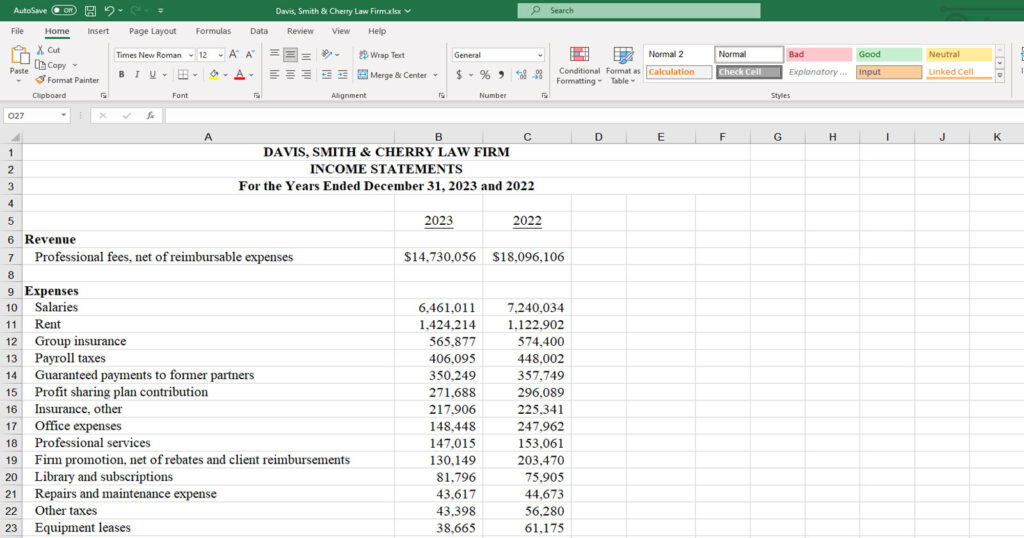The matching principle in accounting is one of the basic fundamental principles in Generally Accepted Accounting Principles (“GAAP”). Adhering to the matching principle is key to complying with GAAP. We’re going to look at what is the matching principle, why you need to understand it and an example.
What is the Matching Principle in Accounting?

The matching principle is an essential concept in accounting that requires a company to report expenses in the same period as their corresponding revenue. This principle helps to ensure a company’s financial statements are accurate and portray an accurate picture of the business’s performance.
In order to adhere to this principle, debit and credit accounts must be balanced, meaning expenses must equal income during any given period.
Accounting Concepts: Matching Made Easy
The Matching Principle Accounting Definition
The matching principle states that all expenses incurred during a business’s fiscal year should be matched with the corresponding revenue earned from the sale of products or services. This helps ensure accurate financial reporting by creating a correlation between expenses and income, which results in a more realistic view of the company’s financial performance.
The matching principle is why companies under GAAP use accrual accounting. The cash basis does not fully comply with the matching principle.
Read More:
Is Accounting Math Heavy? (Are Accountants Good at Math?)
Matching Principle Example
To demonstrate, it is certainly helpful to go over an example. Let’s say a company earns $3,159 in September for selling Amazon products online. They must also record all of their associated costs for that month before reporting it on their financial statements. The matching principle drives accrual accounting by allowing companies to track both income and expenses during any given year without having to wait for money to exchange hands or services rendered first.
Now that you’ve seen an example, it is worth noting the matching principle is fundamental to double-entry bookkeeping and forms a cornerstone of modern accounting practices. When applied correctly, this principle of accounting helps businesses accurately record their financial information for a specific period of time.
GAAP Matching Principle: Why You Need to Understand It

The accounting matching principle is a fundamental concept you’ll use forever in accounting. It’s one of the building blocks to understanding harder and more complex topics in accounting.
In its simplest form, the matching principle requires that expenses be matched with revenue in the period it was earned. So basically, when an expense is incurred to generate revenue, it should be reported in the same period as that corresponding revenue.
Read More:
Average Income for Accountants (Income of a CPA Exposed)
Is the Matching Principle the Same as Accrual?
When it comes to accounting, the matching principle is often considered synonymous with accrual basis accounting. However, these two terms are not interchangeable and have distinct meanings. It’s important to understand the difference between them in order to get a better understanding of how they fit into financial reporting, bookkeeping and accounting in general.
The matching principle seeks to create a correlation between revenues and expenses by ensuring that all revenue earned in an accounting period is also recorded as an expense for that same period. This allows businesses to link revenues and expenditures so that the net income can be accurately represented on financial statements. The goal of this is to properly analyze a company’s performance over time rather than at one point in time.
Accrual, on the other hand, is when you recognize assets and liabilities as soon as they are incurred regardless of when cash payments occur or when cash receipts are received. If you are stuck on this point, then it may be worth reviewing the accrual accounting definition and example.
Important Reminder: Don’t forget that the income statement is for a period of time and the balance sheet is the accounts at a point in time.
What Happens if You Violate the Matching Principle?
Violating the matching principle is a big no-no for GAAP. If you violate the matching principle when producing financial statements, the accuracy and reliability of those statements will be compromised. This is because the matching principle states that expenses should be recorded in the same period as the revenue generated from them; if this isn’t done, it will create an imbalance and lead to inaccurate financial statements.
Thanks to having CPAs and auditors, you generally won’t see large companies violating the matching principle. If they do, their auditors may notice and raise the issue but again, it would be uncommon to violate it in the first place.
The Matching Principle in Accounting: Take Time to Learn It
The matching principle is an important part of accounting basics and is a key part of GAAP accounting. Taking the time to learn it will help you understand harder accounting concepts and how GAAP financial statements are presented. Hopefully, you have a grasp of it by now but if you are struggling, drop a message in the comments below!



